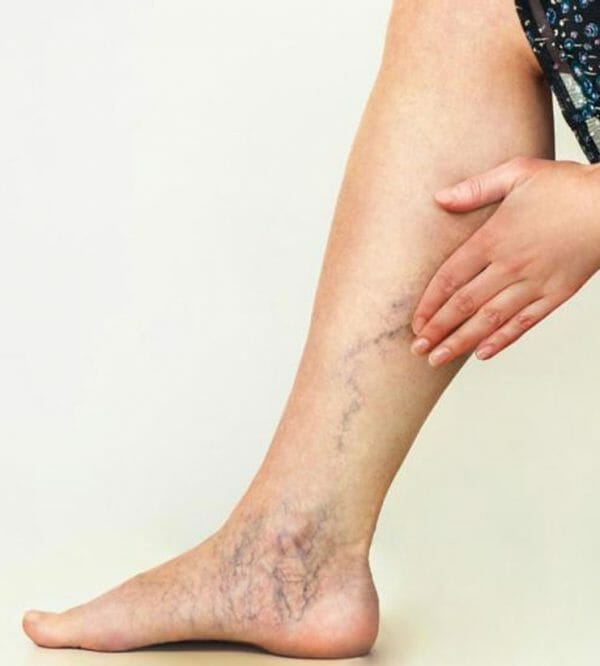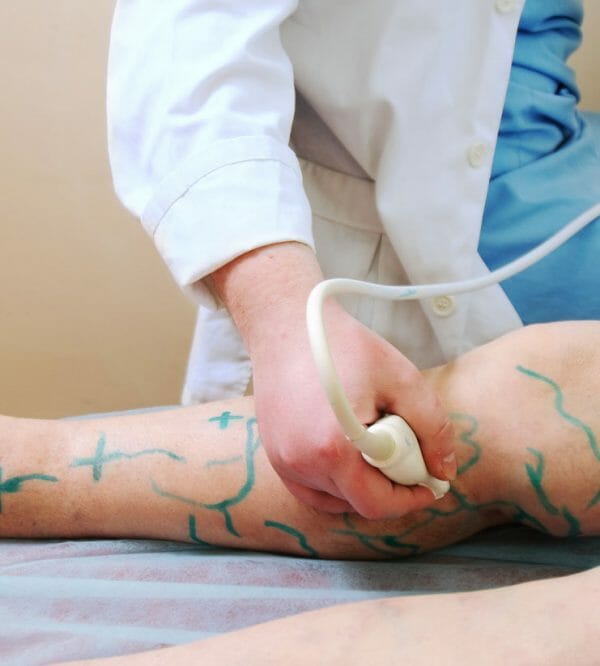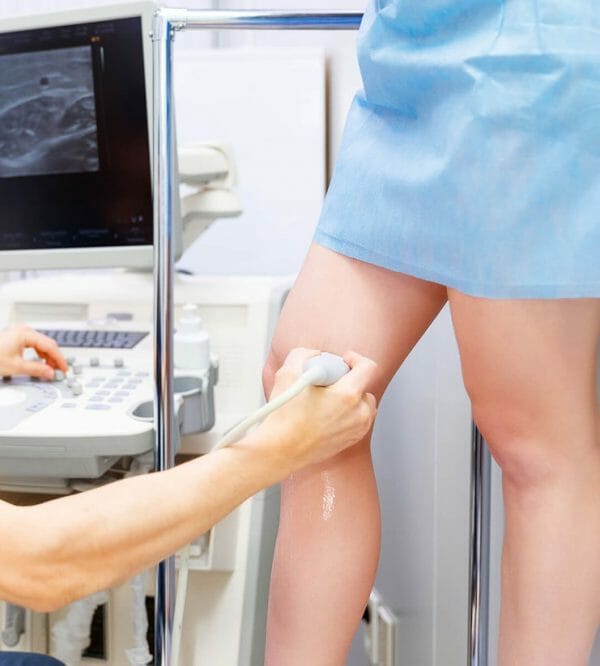
Vein Removal Guide for Patients
Are you experiencing discoloration or discomfort in your legs?
Varicose veins are the result of faulty valves in the veins that cause the blood to flow in the wrong direction.
A bothersome condition, varicose veins often cause patients to experience swelling in the veins of their legs and feet due to the pooling of blood within them. It can be uncomfortable but is rarely dangerous.
One in four adults in the United States has experienced related symptoms such as painful, achy legs, swollen ankles, and spider veins.
Luckily, there is a varicose vein treatment. Patients can undergo a vein removal procedure, otherwise known as an ambulatory phlebectomy.
To help you in your search for relief, we have put together an easy to follow guide for patients who are candidates for varicose veins treatments.
If you do not find all of your answers in this guide, or you wish to further your research, please visit our page on managing symptoms.
What Causes Varicose Veins?
Veins are the highways used by our blood, which travels through our bodies through one-way valves. If the vein becomes stretched, it loses flexibility, weakening those valves.
When it is stressed, blood can leak backward and flow in the opposite direction, also called venous stasis. When this happens, blood accumulates in the vein or veins, which causes them to become enlarged and swollen. This can also lead to blood clots or superficial venous thrombosis.
The most vulnerable veins are those furthest away from the power source; the heart. Legs and feet are most affected because gravity makes for a more difficult and obstructed blood flow.
Who Is Likely to Get Varicose Veins?
Weight, gender, hormones, genetics, and lifestyle are all determinants for who will develop varicose veins.
People who are overweight tend to have a higher risk. If a person has a condition that causes a heavy pressure on the abdomen, it can cause varicose veins as it would affect the blood flow.
Women are more likely than men to get varicose veins because of hormone factors. Using birth control pills, postmenopausal hormone replacement, or the stages of puberty or menopause can increase your risk.
Pregnant women are also likely to acquire this condition as there is a lot of pressure placed on the abdominal region. Pregnancy also increases the amount of blood in the body, which causes increased pressure on the circulatory system.
Changes in hormone levels can also lead to the relaxation of the blood vessels. Typically, they will go away after the pregnancy is over.
Varicose veins can be genetic, causing individuals to be more prone to the condition. Those over the age of fifty are also more likely to get varicose veins, especially if there is a family history.
Also, lifestyle can play a role in causing varicose veins as well, such as working a job that requires a lot of standing, being on your feet, or sitting.
Is There a Way to Prevent Varicose Veins?
Sometimes, varicose veins are genetic, and there is no proven way to prevent their occurrence completely.
You can decrease your risk by taking measures to improve your circulation. Exercise, eating a high fiber, low-salt diet, elevating your legs, and changing your position from sitting or standing are some daily habits that we recommend.
If there is concern for getting this condition, a varicose vein treatment for prevention could be to wear compression stockings to increase the blood flow in the legs and decrease swelling.
What Do I Do If I Have Varicose Veins?
Varicose veins are typically not dangerous. They can be unsightly though which leads many patients to feel subconscious and wish to pursue treatment for varicose veins for cosmetic reasons.
If veins become too large, painful or troublesome, there are vein treatment options to reduce their appearance or for complete removal.
Keep reading to learn your options for the best vein treatment options available.
Laser Vein Removal: Highly Effective, Minimally Invasive

Laser vein treatment has been used for over 20 years and is quite safe and effective. The rate of success is 94%.
Preparation:
Before your visit to the medical office, you should drink plenty of water. Make sure that you do not shave the treated area on the day of the appointment, or apply makeup or lotion.
If prescribed a sedative medication, take it one hour before and make sure that you have someone to drive you to and from the hospital or vein care center.
For your comfort, you should wear loose, comfortable clothing. You should also make sure you’re not wearing your favorite underwear, as the doctor will prep the entire leg, including the groin area.
What to Expect:
A laser, or a highly focused beam of light, will be used to heat the affected varicose vein or veins, causing scar tissue to form.
For cautionary reasons, you will be given protective eyewear during treatment. The laser only targets the unwanted varicose vein or veins, leaving the surrounding skin untouched.
Healing and Recovery:
Recovery is typically short, and you will be able to walk right away following the procedure. You will be told to wear compression stockings for about a week after.
After laser treatment, the veins will gradually change from a dark blue to light red color, and will eventually disappear. This healing process takes anywhere from two to six weeks. Larger veins can sometimes take up to three months. You may need to undergo multiple sessions to obtain your desired results.
Vein Stripping: Traditional Outpatient Procedure
Preparation:
Before your vein stripping procedure, tell your provider what drugs you are taking. Also inform them if you might be pregnant, or if you have been drinking more than 1 or 2 alcoholic beverages per day.
On the day of the procedure, you cannot drink or eat anything for 6-8 hours before the vein stripping. If you have medicine to take, drink only a tiny sip of water.
What to Expect:
The vein stripping procedure, also known as an ambulatory phlebectomy, typically takes from 1 to 1 ½ hours.
If you are not allergic to anesthesia, your healthcare professional will administer either a general or spinal anesthesia through injection. With general anesthesia, you will be asleep and unable to feel any pain. With spinal anesthesia, the lower half of your body will go numb.
Your doctor may also use a local anesthesia at the site of where the incisions will be made.
During the surgery, there will be 2 to 3 small incisions in your leg, near the top, middle, and bottom of the vein. One will be in your groin, the other in the middle, and the last on your calf or ankle.
A wire is tied to the vein and is used to pull it out through the lower cut. The thread is thin and flexible. Your surgeon will close the incisions with stitches.
Healing and Recovery:
For a few days (3-5) after the procedure, you will have to wear bandages and compression stockings to control bleeding and swelling.
Sclerotherapy Vein Treatment: a Simple Cosmetic Procedure
One of the most common varicose vein treatments for spider veins is sclerotherapy. Since the 1930s, this has been a proven and efficient procedure.
It is not a viable solution for pregnant women. Your eligibility depends on the health of that area of your skin.
Preparation:
You should avoid taking certain medications before sclerotherapy. Talk to your doctor about your prescriptions or any herbs or dietary supplements that you are taking.
You should not shave, wear makeup, or put lotion on your legs before the procedure.
What to Expect:
This is a quick procedure that lasts from 15 to 30 minutes performed by a dermatologist or a surgeon. The doctor will inject a fine needle full of a salt solution directly into the vein.
You may experience some mild discomfort for a couple of minutes.
Healing and Recovery:
After sclerotherapy, walking is encouraged. You will be able to resume your daily activities and even drive yourself home.
You should avoid taking any anti-inflammatory medication for at least 48 hours as well as hot baths, compresses, saunas, or direct sunlight exposure.
You may experience mild itching, raised, red areas, or bruising at the injection site. These side effects should disappear within a few days.
Radiofrequency Vein Ablation: Minimally Invasive and Very Successful
Another solution to treat a varicose vein or veins and similar to the laser treatment is the radiofrequency vein ablation. A doctor uses heat to damage the vein, causing scar tissue to form, only using radiofrequency energy. It typically closes off the varicose vein in the leg.
Preparation:
There is no special preparation necessary, though, like all procedures, you must let your doctor know if you are allergic to anesthetics. Your skin will be sterilized, and local anesthesia will be administered to the area for numbing.
What to Expect:
Radiofrequency energy enters the vein through a catheter that is inserted through a tiny incision in the leg. The cut will be either above or below your knee.
The procedure typically takes place in a medical office setting. You will be administered a local anesthesia or a mild sedative to help you relax.
Healing and Recovery:
Most of the time, the recovery from radiofrequency ablation is easy and fast. You may feel a tightening sensation for a couple of days or maybe some bruising or swelling. Veins may take a few months to disappear completely.
Varicose Veins Treatment Cost

Are you seeking a vein treatment, but fear that the price tag for relief is just too high? Let us talk about the cost of these various procedures and what considerations to take before choosing the best method for you.
There are a few factors that will impact how much you pay. Do you have an underlying venous disease and/or at risk for blood clots? Is the treatment medically necessary, or is it only cosmetic?
If you have venous insufficiency, a known vein disease, treatment will be covered by most insurance companies.
If the procedure is only cosmetic, it may cost over $1000.
Home remedies can be useful for reducing the appearance of varicose veins and provide pain relief. Changes in diet, exercise, and taking plant extracts such as horse chestnut can relieve related discomfort.
Get the Best Help and Relief from Varicose Veins
No matter your reason for pursuing vein treatment, there are options available to you. Speak to your vascular specialist or visit an advanced vein center.
Varicose veins affect approximately 35% of the American population, are you considering a vein removal treatment for your varicose veins?
Visit us at vispdocs.com, or call 928.771.8477 for more information.
Vascular & Interventional Specialists of Prescott was formed in 2010 by a group of subspecialty radiologists that perform numerous minimally-invasive, low-risk procedures using the tools of our trade for guidance—x-ray, ultrasound, CT scan, and MRI. The team’s goal is to educate patients and medical communities, while also providing safe and compassionate health care, with rapid recovery times and low risk of complications.
